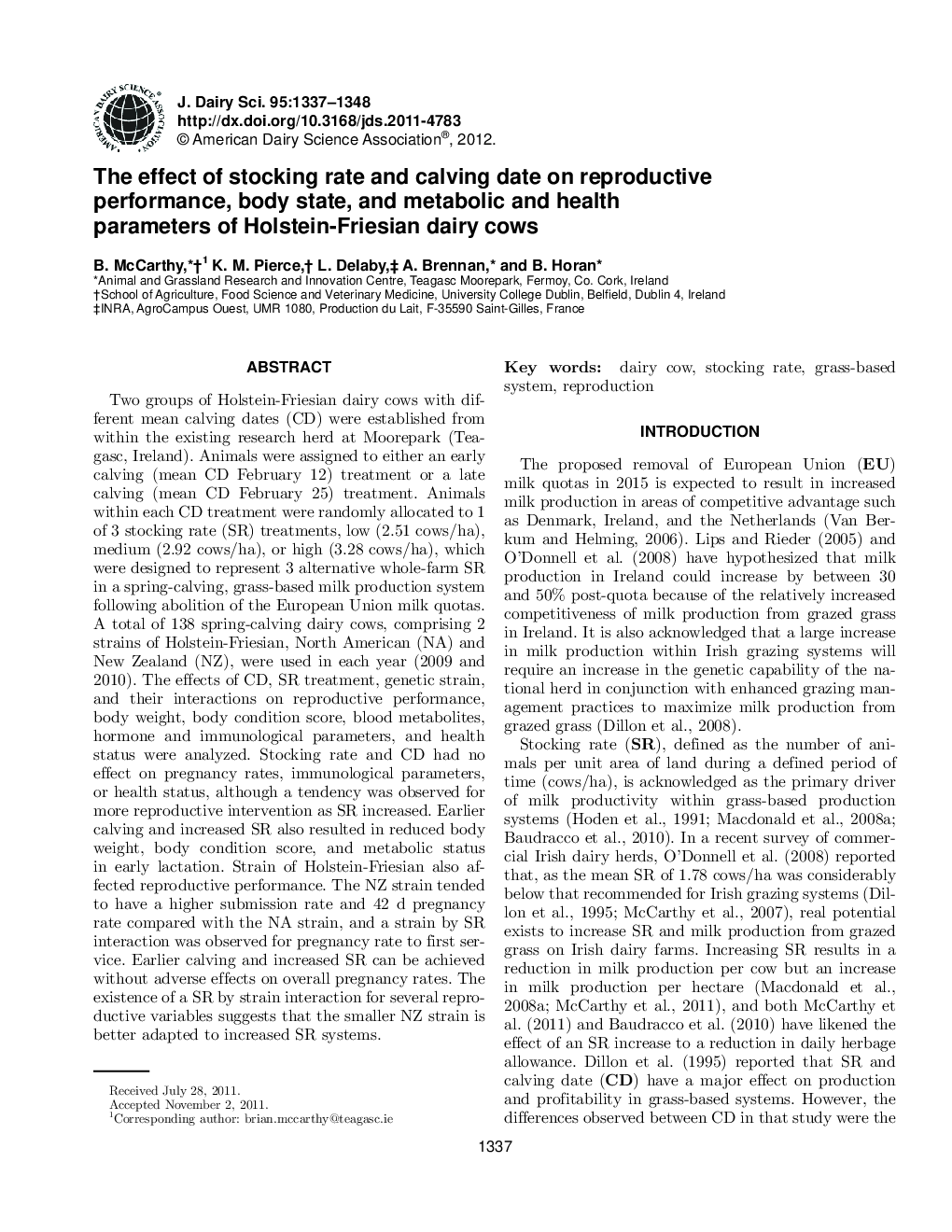| کد مقاله | کد نشریه | سال انتشار | مقاله انگلیسی | نسخه تمام متن |
|---|---|---|---|---|
| 10976563 | 1108042 | 2012 | 12 صفحه PDF | دانلود رایگان |
عنوان انگلیسی مقاله ISI
The effect of stocking rate and calving date on reproductive performance, body state, and metabolic and health parameters of Holstein-Friesian dairy cows
دانلود مقاله + سفارش ترجمه
دانلود مقاله ISI انگلیسی
رایگان برای ایرانیان
کلمات کلیدی
موضوعات مرتبط
علوم زیستی و بیوفناوری
علوم کشاورزی و بیولوژیک
علوم دامی و جانورشناسی
پیش نمایش صفحه اول مقاله

چکیده انگلیسی
Two groups of Holstein-Friesian dairy cows with different mean calving dates (CD) were established from within the existing research herd at Moorepark (Teagasc, Ireland). Animals were assigned to either an early calving (mean CD February 12) treatment or a late calving (mean CD February 25) treatment. Animals within each CD treatment were randomly allocated to 1 of 3 stocking rate (SR) treatments, low (2.51 cows/ha), medium (2.92 cows/ha), or high (3.28 cows/ha), which were designed to represent 3 alternative whole-farm SR in a spring-calving, grass-based milk production system following abolition of the European Union milk quotas. A total of 138 spring-calving dairy cows, comprising 2 strains of Holstein-Friesian, North American (NA) and New Zealand (NZ), were used in each year (2009 and 2010). The effects of CD, SR treatment, genetic strain, and their interactions on reproductive performance, body weight, body condition score, blood metabolites, hormone and immunological parameters, and health status were analyzed. Stocking rate and CD had no effect on pregnancy rates, immunological parameters, or health status, although a tendency was observed for more reproductive intervention as SR increased. Earlier calving and increased SR also resulted in reduced body weight, body condition score, and metabolic status in early lactation. Strain of Holstein-Friesian also affected reproductive performance. The NZ strain tended to have a higher submission rate and 42 d pregnancy rate compared with the NA strain, and a strain by SR interaction was observed for pregnancy rate to first service. Earlier calving and increased SR can be achieved without adverse effects on overall pregnancy rates. The existence of a SR by strain interaction for several reproductive variables suggests that the smaller NZ strain is better adapted to increased SR systems.
ناشر
Database: Elsevier - ScienceDirect (ساینس دایرکت)
Journal: Journal of Dairy Science - Volume 95, Issue 3, March 2012, Pages 1337-1348
Journal: Journal of Dairy Science - Volume 95, Issue 3, March 2012, Pages 1337-1348
نویسندگان
B. McCarthy, K.M. Pierce, L. Delaby, A. Brennan, B. Horan,